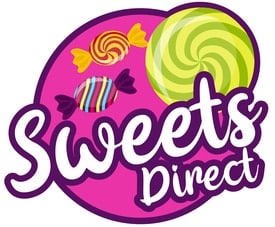Advent calendars are, without a doubt, one of the best things about Christmas. There’s nothing quite like the nostalgia of opening a tiny door to reveal a festive chocolate each day and counting down the days until Christmas.
But, where did Advent calendars come from, and how did they become so popular? In this blog, we answer the question above and guide you on how to make your own, personalised Advent calendar this Christmas.
Whether you’re searching for a festive craft idea to keep little ones occupied or you fancy a different type of Advent calendar this year, read on for all the inspiration you need!
The Origins of the Advent Calendar
Did you know that, like many of the Christmas traditions we love today, the Advent calendar also originated in Germany?
Dating back to 19th-century Germany, Advent Calendars were a way for families to mark each day until the 25th December. However, chocolate advent calendars didn’t emerge until many years later.
Traditionally, families in Germany during the 1800s would use chalk lines on calendar doors or even light candles as each day passed in December. Sometimes, a religious image would be hung on the calendar, too.
By the early 20th Century, Advent calendars were a popular tradition and were reinvented for commercial purposes. In 1958, the first chocolate calendar was produced and embraced by the rest of Europe.
It wasn’t until 1971 that Cadbury’s released the first chocolate Advent calendar in the UK. But by the 1990s, almost every household across the country adopted the use of chocolate Advent Calendars in the run-up to Christmas.
Chocolate Advent Calendars in 2025
These days, Advent calendars are available in many varieties, so you can choose one based on your favourite type of chocolate.
Many families choose to buy Advent Calendars from supermarkets, as they are generally available to buy from Autumn onwards. Today, you can even find non-traditional Advent calendars containing gummy sweets, savoury crisps, and other types of snacks.
There’s been a huge shift in the way we view Advent calendars – once symbolic of the religious significance of Christmas, today these calendars are focused more on enjoying a treat each day.
How to Make Your Own Advent Calendar
A homemade Advent calendar can be a perfect way to welcome the festive season, and is a great excuse to get creative. Whether you opt for a traditional card calendar or a fabric option with pockets, the options are endless.
In this section, we want to provide some inspiration for creating your own Advent calendar. All you need is a few arts and crafts supplies to get started and a bit of imagination!
1. Draw out your design and settle on a colour scheme. The great thing about creating your own advent calendar is that you can think outside of the box. Perhaps you want to ditch the rectangular shape of a cardboard calendar and go for a star, or maybe you want a gold and black theme, you decide!
2. Gather your supplies or visit a crafts shop to buy them. For a cardboard calendar you will need: card, scissors, a craft knife, glue, ribbon or something similar for hanging, and decoration supplies of your choice.
3. There are plenty of Advent calendar tutorials online, however, you will generally need to cut out a back panel, and smaller pieces for the doors, while folding and glueing into place. If you prefer to, you can also buy a blank Advent calendar ready-built from a shop such as hobbycraft.
4. Finally but not least, once your Advent calendar has been made, you get to decide what to put behind each door to countdown to Xmas. You could include small toys and collectible items, classic chocolates, wrapped sweets, miniature pick n’ mix and so on.
Read on for more inspiration and ideas for what to include in your personalised advent calendar.
Sweet Treats to Include in Your Advent Calendar
Onto the fun part – filling your Advent calendar with sweet treats and small gifts! Creating your own Advent calendar is not only a fun activity but also a great way to ensure you don’t miss out due to dietary requirements.
Whether you’re vegan, or can’t consume too much sugar, by having control over what goes into your calendar you can still join in on the festive tradition.
Below, we’ve rounded up some ideas for what types of sweet treats to put in an Advent calendar:
1. Wrapped sweets are non-messy and can be stored in an Advent calendar very easily. They’re a great option and provide plenty of personalisation.
2. For fizzy sweets lovers, you can include Christmas-themed sweets such as our sugared candy canes for a bit of playfulness.
3. Classic chocolates are always a great option, but you can always branch out a bit with these types of treats. For example, maybe choose chocolates with popping candy for extra fun or a white chocolate on one or two days.
4. Pick and mix may not come to mind when you think of Christmas, but again, these types of sweets allow for plenty of creativity. Little ones will enjoy the surprise of new sweets every day, and you can limit how many sweets are included behind each door.
Final Tips and Advice
Remember, a homemade Advent calendar doesn’t need to be extravagant; instead, it’s all about the joy that comes with making and personalising. No matter your budget for creating a homemade calendar, you can capture the excitement of counting down to Christmas Day with all types of sweets and small keepsakes.
At Sweets Direct, we stock a huge range of sweets, perfect for personalising an Advent calendar. From gummies to bonbons and everything between, you’re guaranteed to find a sweet mix of treats to stock up on for the festive season.
